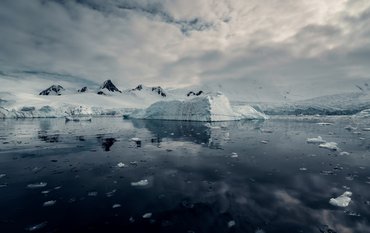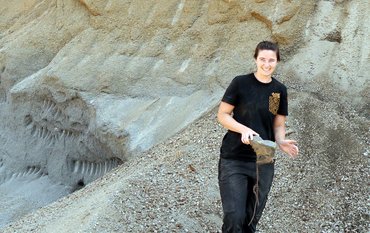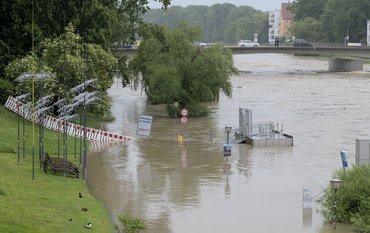Despite subzero temperatures, increased UV radiation, little liquid water, and few available nutrients, bacteria living at Earth’s poles thrive. They manage it thanks in part to molecules called biosurfactants, which help them separate the complex substrates they feed on into easy-to-metabolize droplets. On February 7 in the journal Trends in Biotechnology, researchers review the hypothetical uses of these cold-loving molecules for “green” detergents, fuel additives, and other applications.
“They really have a tremendous potential,” says microbiologist and biotechnologist Amedea Perfumo of the GFZ German Research Centre for Geosciences. Biosurfactants are safe to release into the environment and can be produced using affordable waste products such as olive oil byproduct and cooking oils. They also work in lower concentrations, so we need less of them to get the same job done. But the ones produced by extremophilic bacteria have what Perfumo calls “an extra feature”: they work at freezing temperatures.
This stability has huge implications for how these molecules could be used. Biodiesel, which is produced from waste materials and cleaner burning than gasoline, might be a viable fuel alternative if a biosurfactant additive could improve its sluggish flow in cold temperatures. Cold-active biosurfactant detergents would mean we could go green by reducing washing temperatures, without worrying that our clothes wouldn’t get clean. These biosurfactants could also be used to harvest natural gas from cage-like ice crystals called gas hydrates or to clean up pollution spills in colder regions of the ocean.
According to Perfumo, there has never been a better time than now to advance research into these biotechnological applications. “The cold regions of our planet are actually becoming more reachable for exploration and for scientific research,” she says. And the growing availability of extremophilic bacteria in culture collections has also improved accessibility. “Scientists who don’t have the option to go personally to the polar regions and take samples can simply get organisms from culture collections. It’s in reach for everybody.”
Cold-active enzymes, which are also produced by extremophilic bacteria, have already begun to be produced industrially. When asked why this isn’t true of cold-active biosurfactants, Perfumo doesn’t have a good answer. “It’s quite a question mark for me,” she says, because she sees so much potential for these molecules. She does acknowledge, however, that there is still a lot of work that needs to be done to determine the most useful bacteria, the conditions at which they will produce the highest yields, and whether it might be possible to produce biosurfactants as part of the process that produces enzymes.
“We still only know a little,” she says. Nonetheless, she’s hopeful. “I think that with a little work and a little patience and especially with joint forces, we can take a bold step in the near future. It will really be a grand challenge for science and technology.”
This work was supported by European Union’s Horizon 2020 research and innovation programme.
Original study: Perfumo, A., Banat, I.M., Marchant, R., 2018. oing Green and Cold: Biosurfactants from Low Temperature Environments to Biotechnology Applications. Trends in Biotechnology. DOI: https://doi.org/10.1016/j.tibtech.2017.10.016
Contact:
Josef Zens, Dipl.-Geog.
Leiter der Presse- und Öffentlichkeitsarbeit
Deutsches GeoForschungsZentrum GFZ
Telegrafenberg
14473 Potsdam
Tel.: +49 (0)331/288- 1040
Fax: +49 (0)331/288- 1044
E-Mail: josef.zens@gfz-potsdam.de







![[Translate to English:] Both scientists sitting on stools in front of a wall of books in the Telegrafenberg library](/fileadmin/_processed_/6/6/csm_Buiter_Castell_DORA_4_e87cb1ea18.jpeg)
![[Translate to English:] Gruppenbild mit 4 Personen](/fileadmin/_processed_/8/d/csm_20241017_GFZ-Emmerman-Medal-005_web_reinhardtundsommer_21a414fa4a.jpeg)






![[Translate to English:] Ice landscape with five red tents](/fileadmin/_processed_/8/9/csm_Zeltlager_auf_dem_Eis_Urheberin_Jenine_McCutcheon_5ced2d523b.jpeg)














![[Translate to English:] Group photo with 7 people in front of a new metal plant in a large laboratory hall.](/fileadmin/_processed_/0/4/csm_20240628-GFZ_Einweihung_Triax-Anlage-PRESSE_Abb1_040_c-Bahlo-GFZ_187906cb48.jpeg)


